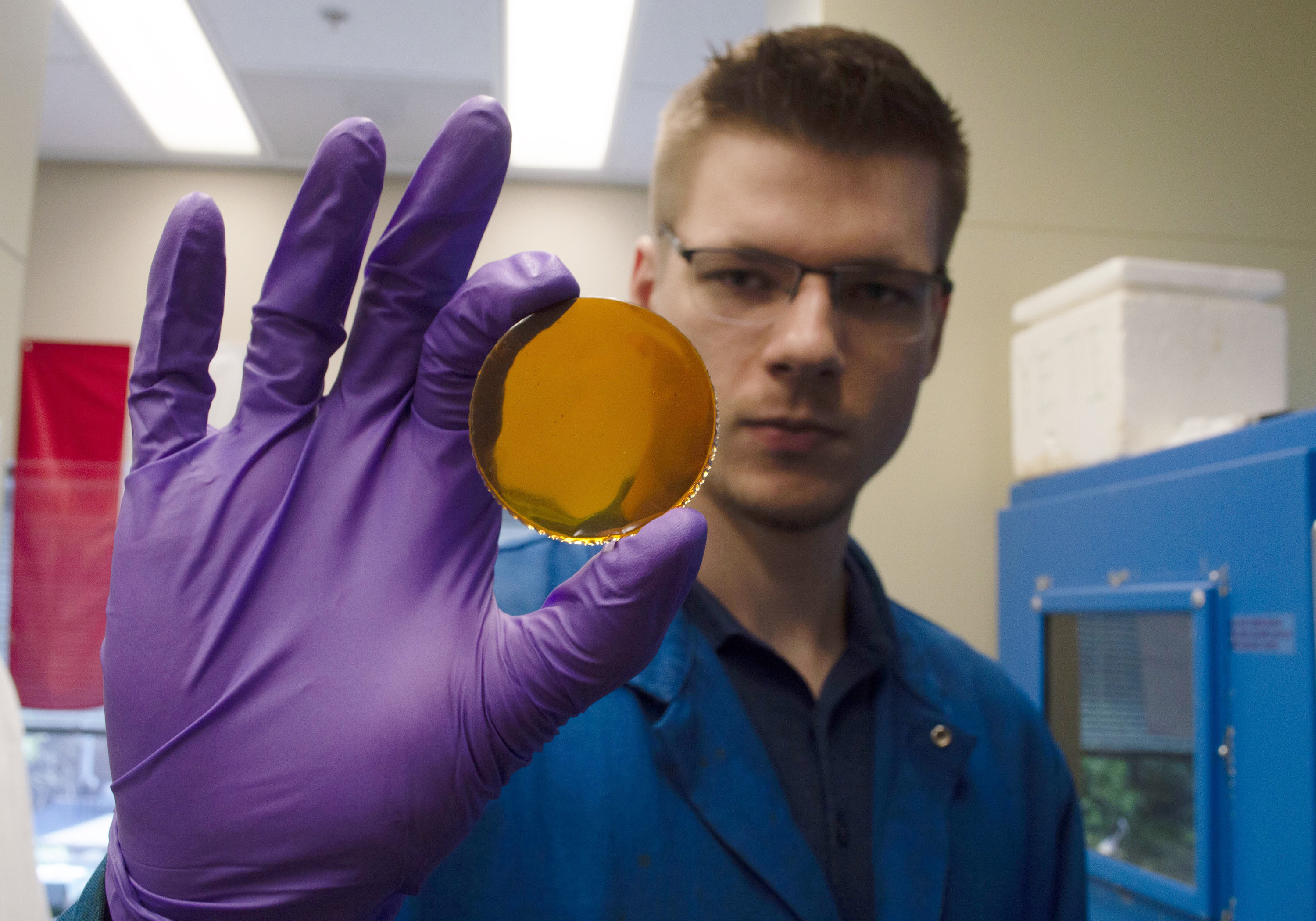USM Doctoral Student Continues Research on Materials Launched into Space
Mon, 07/29/2019 - 01:42pm | By: Van Arnold
 University of Southern Mississippi doctoral student Witold Fuchs remains a bit awe-struck
that materials he invented in a USM polymer lab are currently circling the globe aboard
the International Space Station (ISS).
University of Southern Mississippi doctoral student Witold Fuchs remains a bit awe-struck
that materials he invented in a USM polymer lab are currently circling the globe aboard
the International Space Station (ISS).
“It is very exciting. Being a part of something bigger than myself is quite an honor,” said Fuchs, who is nearing the end of a summer internship at NASA’s John H. Glenn Research Center in Cleveland, Ohio.
Fuchs, a third-year polymer science and engineering doctoral student, has spent the past year collaborating with NASA on the design of a carbon fiber composite as a potential hull for spaceships and satellites. His research materials were launched into space last month for testing aboard the ISS.
While continuing to refine his carbon fiber composite, Fuchs is also working on multifunctional composites for space structures.
“I’ll continue working on the materials currently in orbit, as well as adapting technology to other chemistries,” he said. “I’ve also begun arranging for ground-testing at NASA Glenn Research Center. If things progress how I’d like them to, then I’ll be incorporating my molecule into carbon-fiber composites and testing them.”
Fuchs and his colleagues developed the materials now being tested aboard the ISS under the tutelage of Dr. Jeff Wiggins, director of USM’s School of Polymer Science and Engineering. The backbone of Fuchs’ research is to develop a lightweight, cost-effective material that can withstand the atmospheric rigors of outer space.
The International Space Station (ISS) is a space station, or a habitable artificial satellite, in low Earth orbit (approximately 240 miles above the Earth’s surface). Its first component was launched into orbit in 1998, with the first long-term residents arriving in November 2000. It has been inhabited continuously since that date.
The materials are scheduled to remain in space for at least one year and possibly as long as two. The fundamental objective is to determine whether or not the materials suffer any degree of degradation while in space.
“When I started this journey of working with NASA, I wanted results fast,” he said. “I was so excited, but over the past months I’ve learned to have patience when it comes to my research. Good things take time. Now that the samples are up in orbit, there’s not much to do but wait for them to come back.”
Fuchs earned his undergraduate degree in biochemistry at the University of Detroit Mercy in his hometown of Detroit, Mich. A classmate suggested Fuchs consider USM’s esteemed polymer science and engineering program for his doctoral studies. He takes special pride in working alongside other scientists in USM’s School of Polymer Science and Engineering.
“For me, being a part of the USM polymer science and engineering program means being among the best and brightest polymer scientists and engineers in the nation, and therefore I strive to live up to those standards every day I come to work,” said Fuchs.